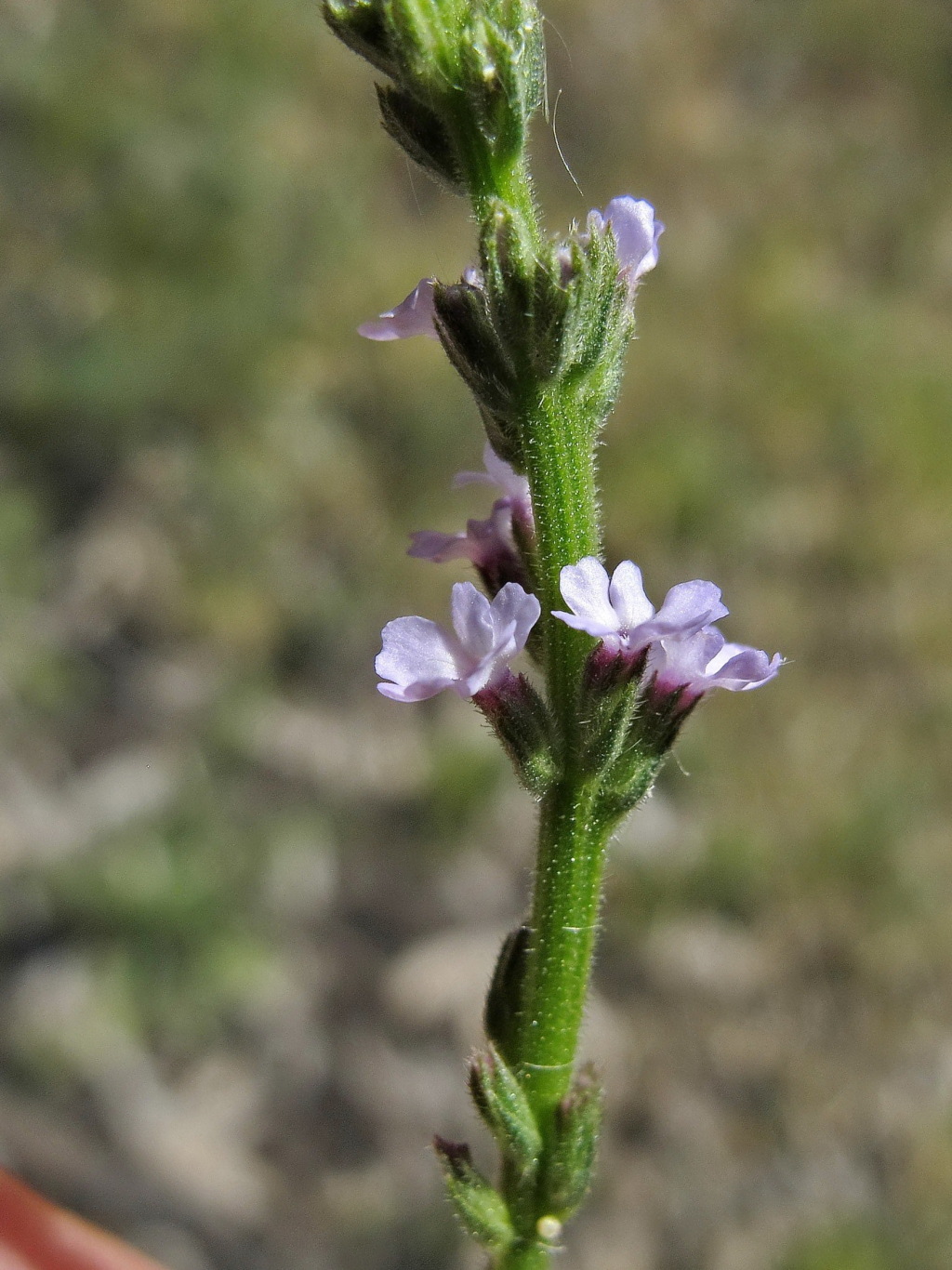Verbena officinalis var. africana
(R.Fern. & Verdc.) MunirStem and branches glabrous, strigose or hispid, often glandular. Lower leaves deeply dissected to near midrib, segments to 10 mm long, acute, serrate, strigillose or strigose with closely appressed hairs above, strigillose or strigose mainly on veins below; upper leaves coarsely serrate to pinnatisect, narrow-elliptic or oblong in outline. Inflorescence glandular, sparsely strigillose or hispid. Flowers distant in lower part; sessile; bracts narrowly ovate-lanceolate, pubescent abaxially, usually up to two-thirds the length of calyx. Calyx strigillose and glandular outside, sparsely strigillose inside. Corolla sparsely hairy with hispid and pilose hairs outside, cylindric. Flowers throughout the year.
MuM, VRiv, MSB, RobP, MuF, GipP, CVU, NIS, EGL, EGU, HSF, HNF, Strz. Also NT, SA, Qld, NSW, Tas.
In Victoria mostly along the Murray River and tributaries and nearby waterbodies in the north but also occasionally recorded on roadsides and besides tracks elsewhere.
Michael (1997a) treats Verbena officinalis var. africana as native while Munir (2002) considers it introduced. The type specimen was collected in Zimbabwe, Africa and other African collections of the species date from as early as 1861.
Conn, B.J. (1999). Verbenaceae. In: Walsh, N.G.; Entwisle, T.J., Flora of Victoria Vol. 4, Cornaceae to Asteraceae, pp. 411–418. Inkata Press, Melbourne.
 Spinning
SpinningMichael, P.W. (1997). Notes on Verbena officinalis sensu stricto and V. macrostachya (Verbenaceae) with new combinations in two closely related taxa. Telopea 7(3): 293–297.
Munir, A.A. (2002). A taxonomic revision of the genus Verbena L. (Verbenaceae) in Australia. Journal of the Adelaide Botanic Gardens 20: 21–103.

